The science behind toffee
It’s pretty tough to define toffee, since people all over the world have varying ideas about what characteristics truly define the sweet stuff. It can be crunchy or chewy; plain or nutty. Some varieties have a chocolate coating and others contain air bubbles to make it light and airy. But basically, toffee is made from heating equal volumes of butter and sugar to form a caramel-coloured candy. How and why does this magical transformation occur?
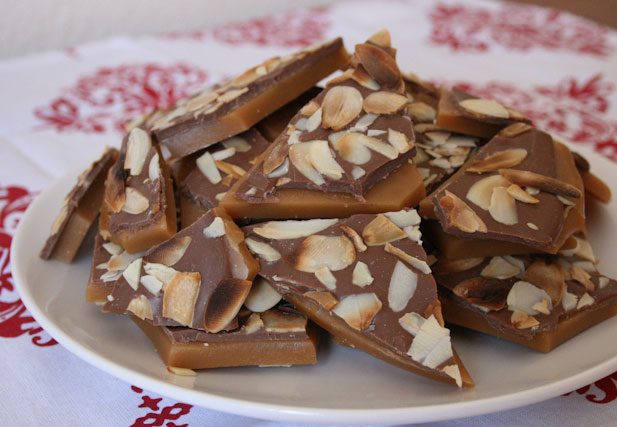 Most of us stopped studying chemistry for a reason so it is enough to know that, put very simply, the sugar molecules react with the amino acids (proteins) in the butter to form new molecules that are delicious and toffee-ish. If you really want to impress your friends, you may also want to remember that this reaction is called the Maillard reaction (after the French scientist Louis Camille Maillard, who must have been taking part in Movember when his picture was taken).
Most of us stopped studying chemistry for a reason so it is enough to know that, put very simply, the sugar molecules react with the amino acids (proteins) in the butter to form new molecules that are delicious and toffee-ish. If you really want to impress your friends, you may also want to remember that this reaction is called the Maillard reaction (after the French scientist Louis Camille Maillard, who must have been taking part in Movember when his picture was taken).
In experimenting with toffee, it’s a good idea to start off with what is known in the US of A as English Toffee (although the verdict is still out as to just how ‘English’ it actually is). This toffee is flat and crunchy, and most often comes with chocolate and nuts on top.
So the ingredients we’ll need are:
1 cup sugar
1 cup butter (225g)
2 tsp water
A pinch of salt (if you used salted butter, leave this out)
170g chocolate chips or chocolate chunks
1/2 cup roasted almonds
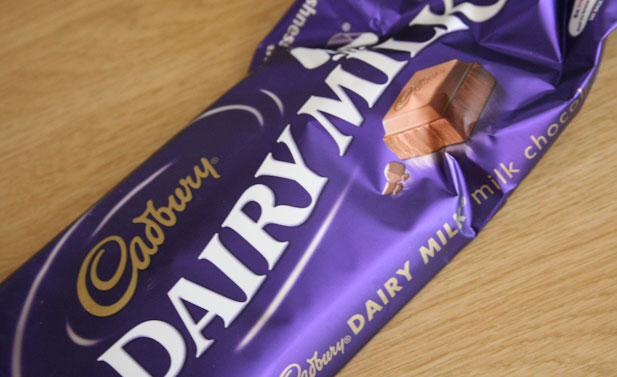 We’ll also need:
We’ll also need:
A heavy saucepan (if your pan is too thin the toffee is at risk of burning)
A candy thermometer
A silpat mat (you could use a baking tray with grease proof paper as a substitute)
And our method will be:
1. Calibrate your sugar thermometer. This can be done by putting it in a pot of boiling water and taking a reading. The amount it differs from 100°C is the amount it needs to be calibrated by.
2. Melt the butter in the saucepan on low heat, together with the sugar, water and salt.
3. Once the butter has melted, turn the heat up to low-medium and stir the mixture while the water evaporates (the evaporation is part of the Maillard reaction we mentioned earlier).
TIP: Stirring with a wooden spoon minimizes the possibility of crystals forming, so use one instead of a metal spoon.
4. Once the mixture begins to increase in volume, you can stop stirring it, and let it cook to 148°C (or, if you’re a candy expert, hard crack stage). Take into account the calibration from Step 1 here.
5. Once it reaches 148°C, remove it from the heat, stir it rapidly for about 30 seconds and then pour it onto the silpat mat and spread it out with a spatula.
6. While the toffee is still hot, sprinkle the chocolate chips on top. When they start melting, spread the chocolate into an even layer across the toffee.
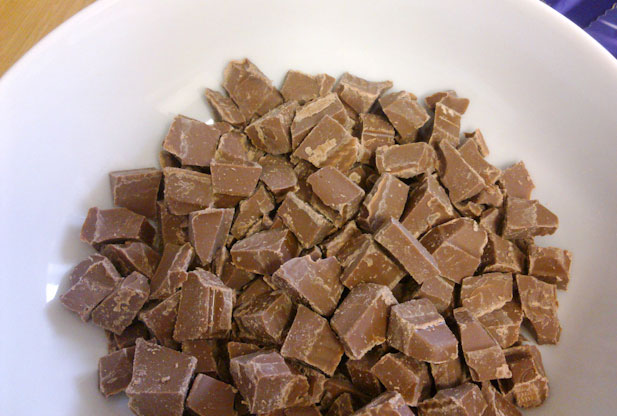 7. Sprinkle the roasted almonds on top.
7. Sprinkle the roasted almonds on top.
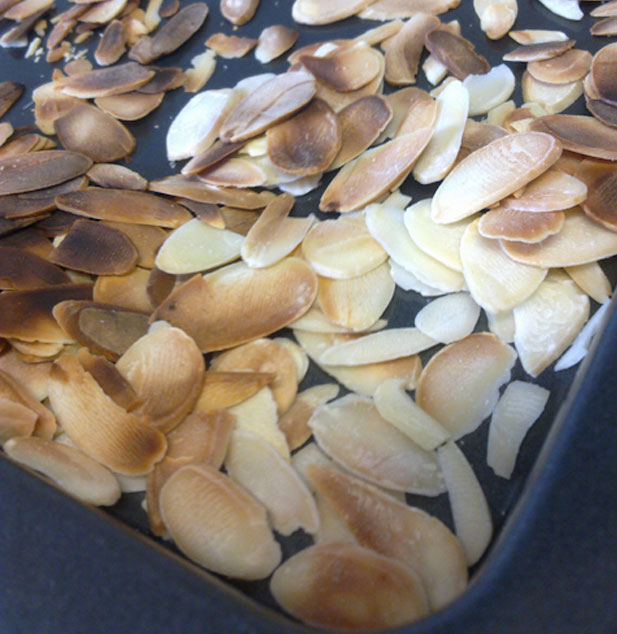 8. Cool the toffee in the fridge until the chocolate has set.
8. Cool the toffee in the fridge until the chocolate has set.
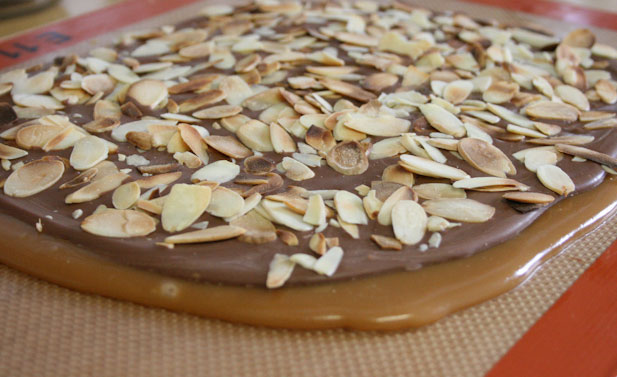 9. Once the toffee has set, you can go ahead and break it up into chunks. Store it in an air-tight tin to prevent it becoming sticky.
9. Once the toffee has set, you can go ahead and break it up into chunks. Store it in an air-tight tin to prevent it becoming sticky.
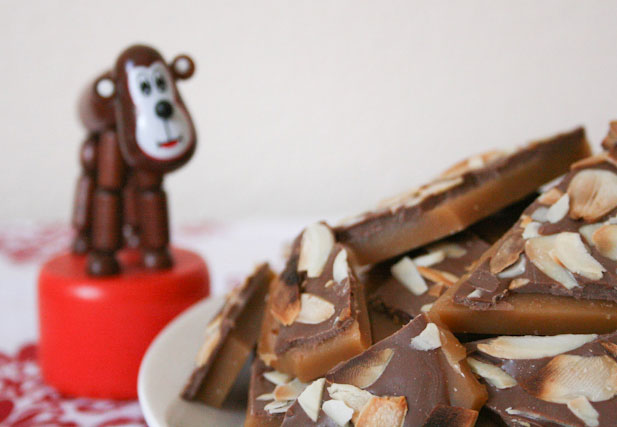 And, if you’re starting to panic about finding Christmas presents for everyone, beautifully packaged toffee might just be your answer. What better gift than a delicious treat of toffee, chocolate and roasted almonds. Mmmm. Download print-friendly version of this recipe.
And, if you’re starting to panic about finding Christmas presents for everyone, beautifully packaged toffee might just be your answer. What better gift than a delicious treat of toffee, chocolate and roasted almonds. Mmmm. Download print-friendly version of this recipe.
Keep your eyes peeled for more toffee-making adventures. In the meantime, happy toffee making.
More in the Science Behind series:
The science behind pavlova
The science behind fudge
The science behind chocolate chip cookies
The science behind cupcakes
The science behind nougat
The science behind crème brûlée
The science behind marshmallows
